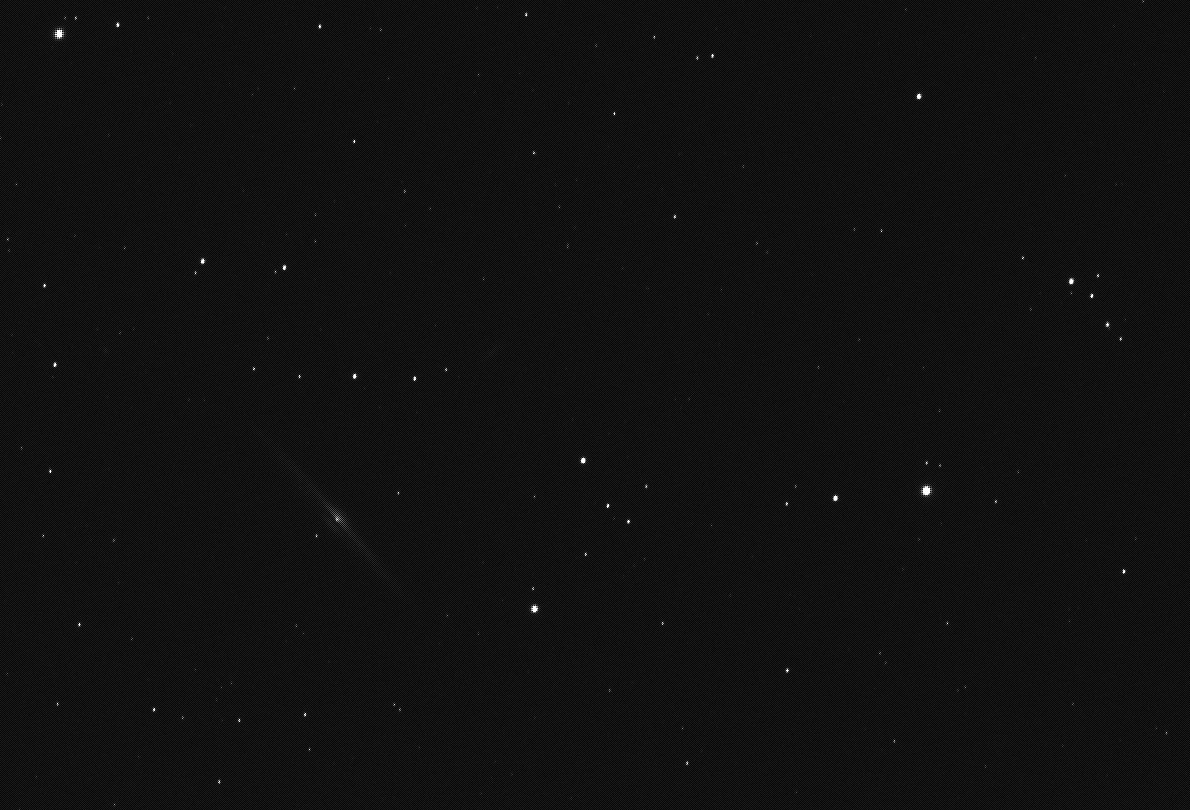
(Click on the image to expand it — the default display size is difficult.)
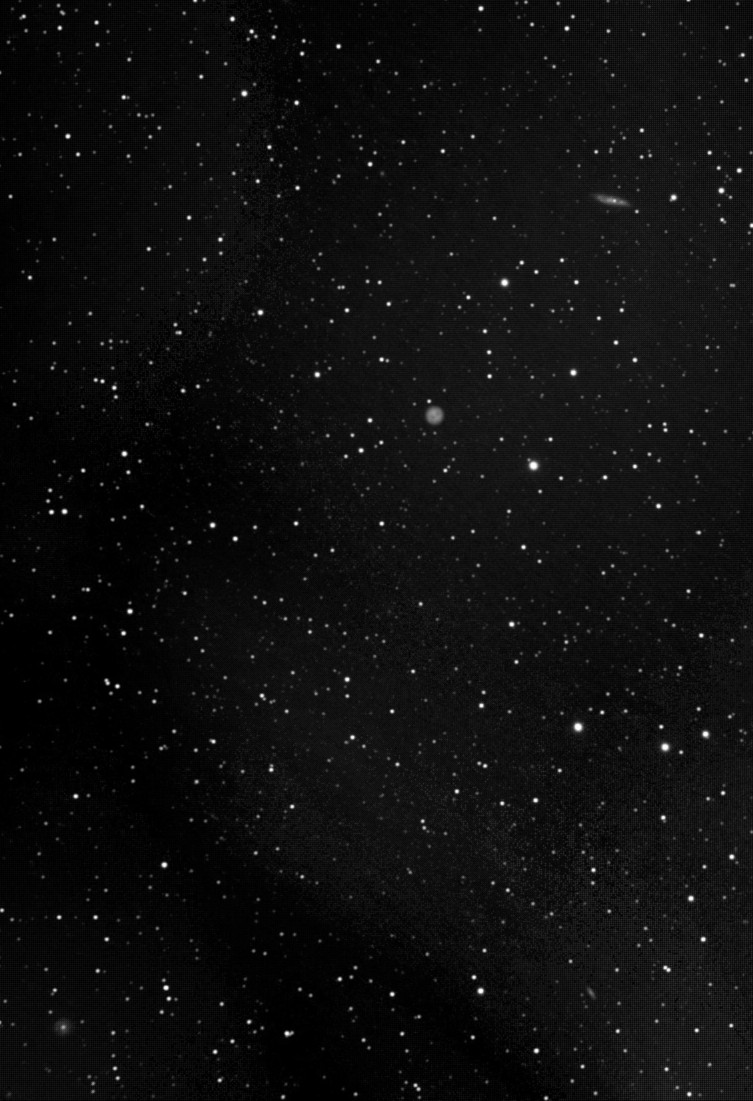
M97 is upper center right — you can make out the 2 “eyes”; M108 is upper right; NGC 3656 is barely visible in the lower left corner, and NGC 3549 is barely visible in the lower right. About the limit of the conditions, the equipment, and the image processing skill.
Here I try to bring out the noise that I worked so hard to eliminate in the first photo. As a photo, I think this one is better…
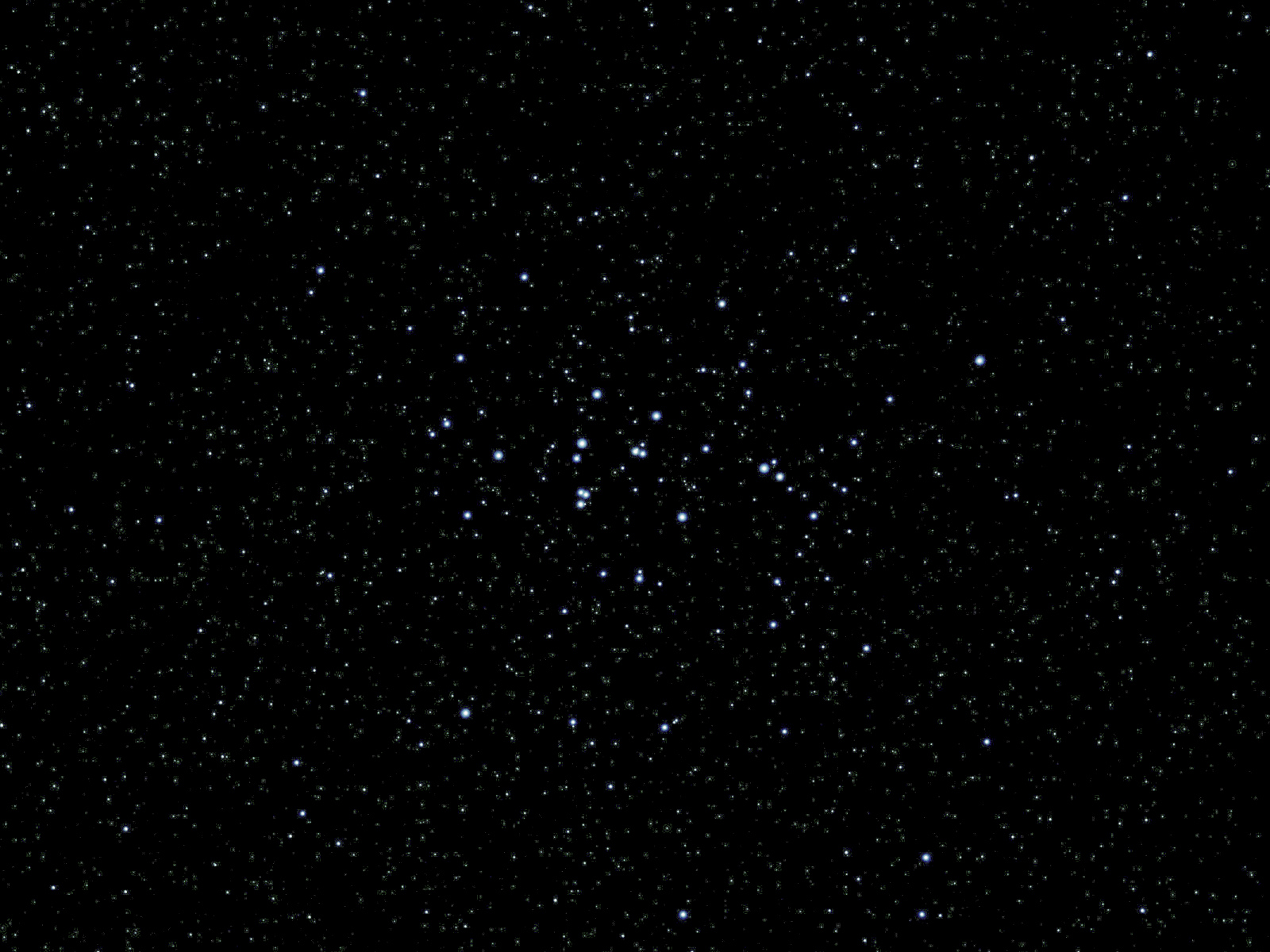
Something completely different — just stars.
I have a new GEM — German Equatorial Mount — and I have to learn about it. It replaces a Sky Watcher camera mount that was overwhelmed by the additional weight of a small refractor telescope, and couldn’t track properly. This new mount is much steadier; the small background stars above are very crisp, though I’m not happy with the image processing — if you pixel-peep, you will see what I mean.
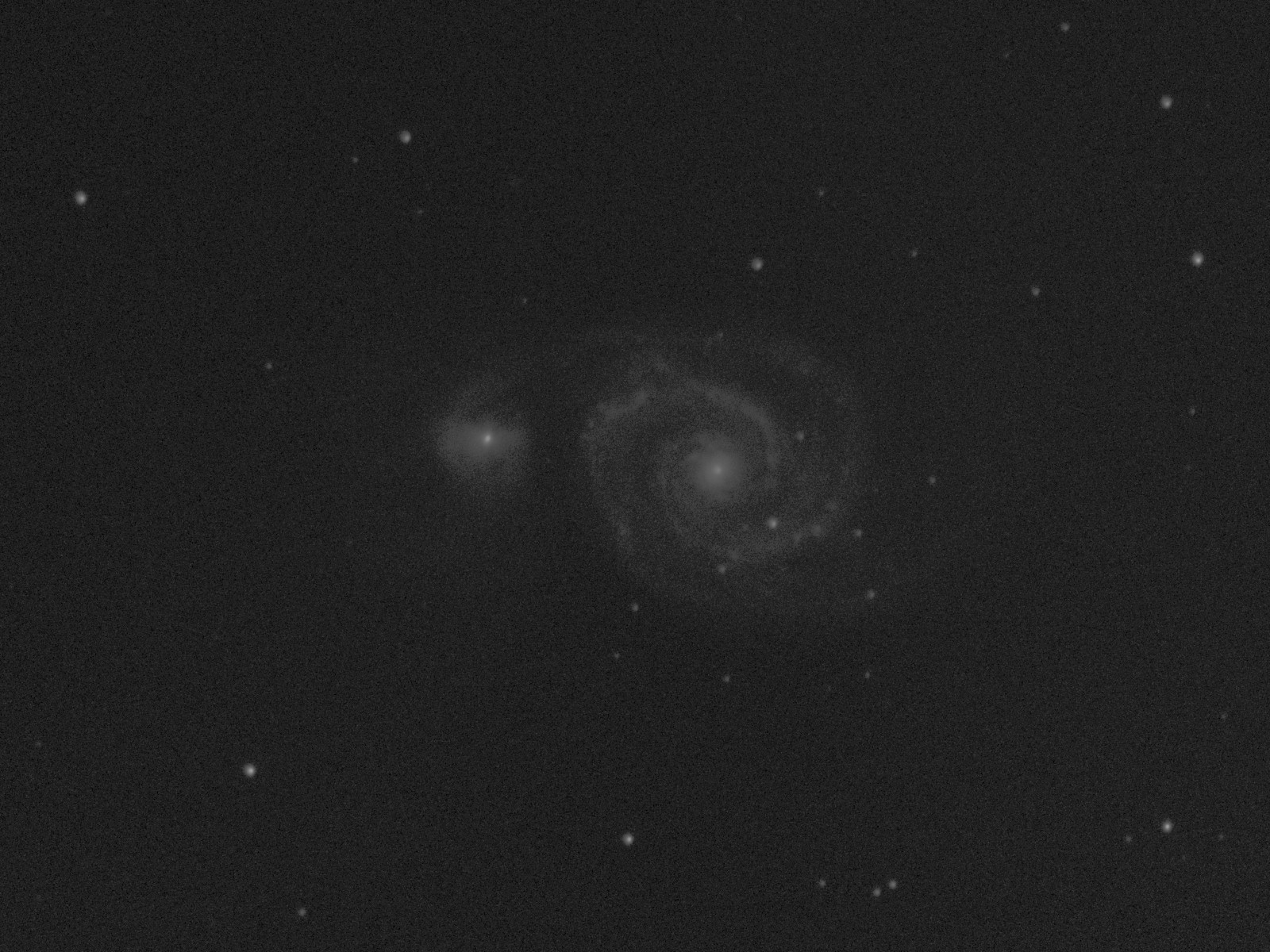
This is a stack of over 70-some 30 second exposures of the Whirlpool galaxy. While there is significant detail, the dynamic range is pathetic. I think this is because 1) the individual exposures are short, and 2) there was a nearly full moon.
However, I’ve seen beautiful photos from stacks of hundreds of 3 second exposures, and the cumulative time from my frames is larger. So undoubtedly my processing technique is faulty. OTOH, I’m not sure of the magnitude of the effect from the moon. Further investigation is required…
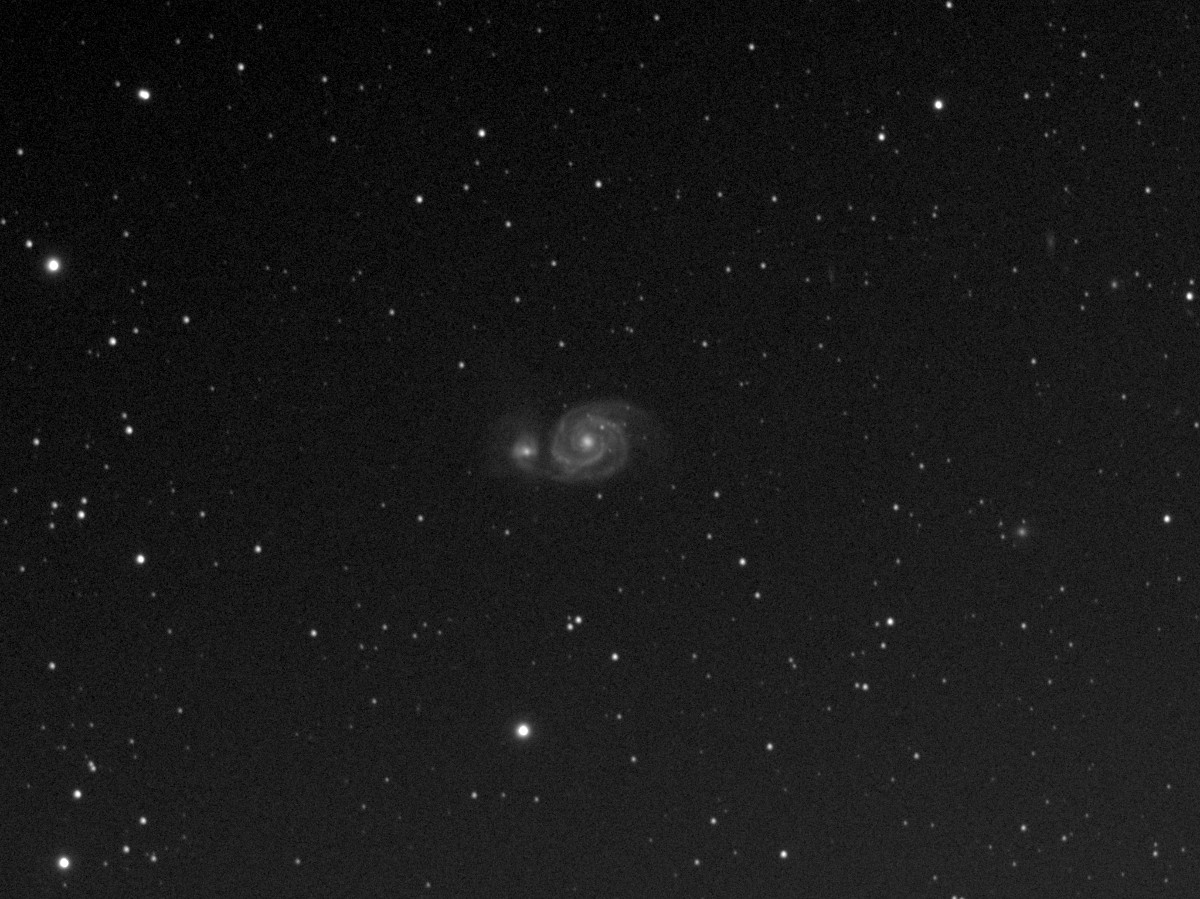
A chestnut. Taken with a small (61mm) low-power telescope from my light-polluted back yard. Heavily cropped, otherwise it would be too small to identify. I’m running into the limits of my equipment — this is about 200 individual one minute exposures stacked together, taken over two nights.

Actually there’s another nebula, making three all together. The Orion Nebula proper, also known as M42, is the large spread wings brightness in the lower center. Separated from M42 by a narrow dark lane is the tear drop shape in the slightly left upper dead center, M43, apparently also known as “Mairan’s Nebula”. And finally in the upper third is the dimmer”Running Man” Nebula, in the top.
I’m getting better at this, but it is an incremental process.
The standard image of the Rosette Nebula is a glorious swirl of red gas sprinkled with a multitude of glittering stars. This, on the other hand, is a dim, noisy, dirty smudge covered with a multitude of oddly distorted spots. Still, it represents progress. My first attempts yielded nothing.
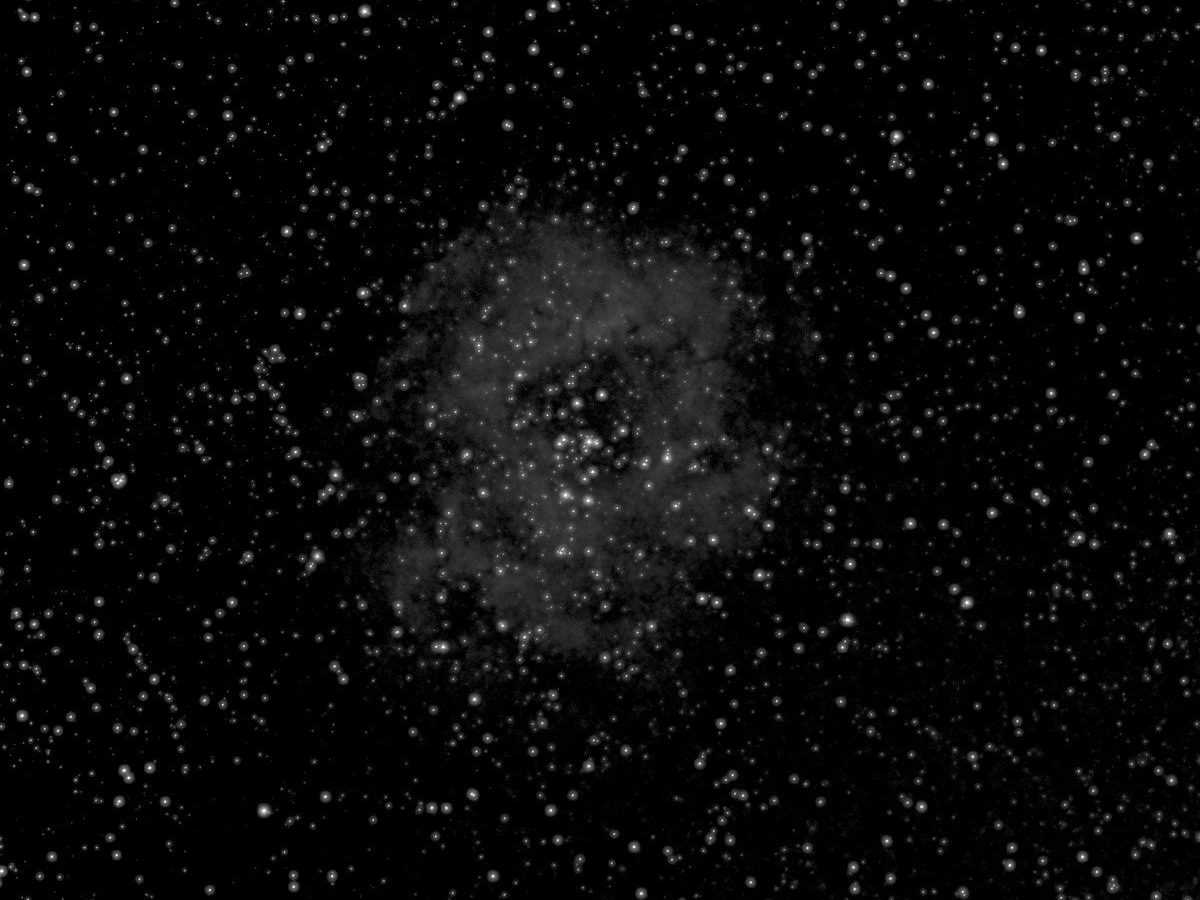

The Horsehead Nebula is a difficult object for purely visual observation, and I have never managed to actually see it. But amateur astronomy has advanced tremendously over the 30 years since my first telescope, especially astrophotography. This photo only shows the faintest blurry image of the Horsehead, but, as you can verify from the screenshot below, it’s the real deal!
Below is a view from Stellarium (free planetarium software) of the same area. I’ve rotated and scaled the image to match the photo.
Interestingly, an inch or so to the left of the star Alnitak below is another fairly bright orange star. It is much dimmer in the photograph above than in the graphic below. It is, in fact, the variable star V1197 Ori. Apparently I caught it on a lower brightness phase.